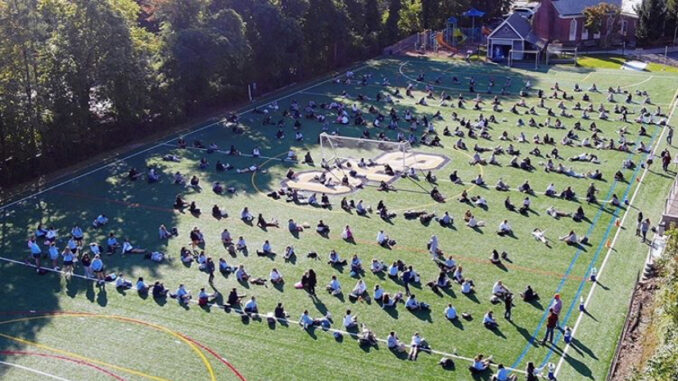
Teresa Pollard ’21
As the previous school year came to an end, many students, in addition to their excitement for summer, had hope of returning to some sense of normalcy the following fall. However, as summer continued without conditions improving significantly, things looked uncertain. In late July, the CDC posted an article stressing the importance of opening schools, hoping to influence educational plans before the school year. The article details the many services that in-person schooling provides to students: a safe learning environment, facilitation for social and emotional development, time for physical activity, and educational instruction. The CDC worries that, similar to “summer slump,” poor virtual instruction could seriously set students behind. Additionally, there are significant concerns about the effect of school closures on low-income students, particularly those who rely on the services that schools provide. These students and low-income school districts tend to be especially ill-affected by virtual learning since they lack the resources to set up an adequate learning environment at home. Currently, there are initiatives throughout states and districts to provide technology to students in need, but this problem still pervades.
All in all, the CDC argued that the risks of attending school were low in comparison to the wealth of benefits they afforded students. However, few schools were able to make this a reality, or, rather, there has been little to no unified effort to provide safe and effective education throughout the US. According to a CNN graphic, as of October 5, only Puerto Rico and the District of Columbia had ordered all schools closed, and Iowa, Arkansas, Texas, and Florida had ordered schools opened. In the 46 remaining states, individual districts have been tasked with figuring things out on their own, and teacher protests across the country prior to the school year have led many districts to move toward all-virtual or hybrid plans. As of October 1, elementary, middle, and high schools have reopened in New York City, marking the first major school district in the US to reopen for in-person instruction. Schools are taking standard measures, such as mask wearing, social distancing, frequent hand washing/sanitizing, and staggered school attendance. Despite these precautions, parents and teachers wait anxiously to learn the full effects of school reopenings.
Here in New Jersey, students, teachers, and government officials are struggling to figure out school dynamics amid the pandemic. NJ.com reports that, as of September 3, out of NJ’s almost 600 school districts, 242 opened fully remote, with only 68 planning to fully reopen, and the rest planned to operate on a hybrid model. Many districts had planned to reopen in late September and early October, though others have planned virtual instruction all the way into January. However, circumstances are constantly changing; many schools that are currently all remote are in the process of making plans for the next phase of the school year, while others which began all in person or hybrid are encountering COVID-19 cases, and dealing with subsequent shutdowns. New Jersey hosts a site dedicated to providing residents with information on COVID-19 within the state, including data about the disease’s spread, resources for those struggling financially, and both policies and plans issued by the state. The site includes information on school cases and outbreaks, but there is some controversy surrounding the statistics, as many state educators are frustrated with the state’s reporting methods. As detailed on the page, only data surrounding cases contracted between students or faculty on school grounds during curricular activities is reported, and, additionally, the state refuses to break up cases within counties as a result of privacy concerns. Some educators argue that this significantly downplays the spread of COVID-19 in schools, and the National Education Assembly (NEA), a widespread labor union representing public school teachers, recently launched a website allowing teachers to self-report confirmed COVID-19 cases in their schools. At the end of the day, while the state only reports 16 school outbreaks – a term specifically defined on their page – the NEA website indicates that faculty and/or staff at about 100 NJ schools have tested positive.
Ultimately, who knows where we’re going or what’s going to happen in the immediate future. While speculation continues, we can all try our best to comply with guidelines and take basic precautions. Let’s try and be thankful for our plexiglass desks, our cleaning crew, and all the other provisions put in place which make it possible for us to come to school. Crazy as it seems, we just might be able to make it through this in one piece (or maybe two); best of luck to everyone this school year!